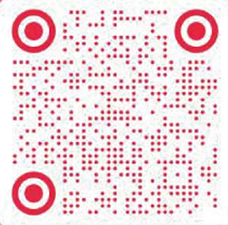Opening time:April 20, 2019
Duration: 2019.04.20 -- 2019.07.16
Location: 1st and 2nd floor exhibition hall of Building 3, Today
Inspirations of the series Menina was originated from Spanish painter Velasquez’s famous painting Las Meninas. As a great realist painter who was deeply appreciated by the Spanish court in the 17th century, Velasquez has made remarkable and irreplaceable contributions to the master gathered European art scene and even later generations. In the picture, inherent rigid compositions of preexisted court paintings were subverted by artists’ meticulous usage of mirror reflection. Through the novelly constructed space-perspective conversion, the specters were placed in an interactive relationship between "watching and being watched", and seems to be sank in a turbulent and changeable visual whirlpool under the painter's exquisite painting skills. The fantastic visual game of Las Meninas has triggered generations of persistent exploration and prestigious artists including Picasso and Dali’s deconstructions and reiterations.
In The Order of Things: An Archaeology of the Human Sciences, French philosopher Michel Foucault devoted the opening chapter to an analysis of Las Meninas. Foucault points out that art is not merely the display of the aesthetics, but also one of the paths to meditation through in-depth gaze. While the specters are spiritually consoled after appreciating the painting, they are triggered to further question and consideration, which elevates the painting to spiritual activities. Such interdisciplinary dialogue across art and philosophy has been redounded for centuries. Now, Wu Ningya’s Egg of Menina will inherit the spiritual thread of this art-historical classic. The element of "eggs" were inspired by the pendant of Princess Margarita's egg-shaped court dress. Since eggs has been considered as the embodiment of life and reproduction, Egg of Menina can be regarded as an egg lay by Las Meninas, which is a tribute and a reinterpretation.
As a Chinese artist who travels between China and Spain, Wu Ningya's reinterpretation of Las Meninas seems to be a coincidence in the arrangement of time and space. In the western-centralized realm of art-history, Wu Ningya intervened from the perspective of a Chinese artist and thus put western art into reexamination within the Eastern context, instead of being confined to Foucault's preoccupation of "gaze" and "reproduction". The final presentation of Egg of Menina not only connects China and the West, but also establishes a bridge of dialogue between classical and contemporary, and embodies art.
At the same time, It is impossible to ignore Wu Ningya’s artistic identity of "outsider". As a member of the non-academic artists group, Wuningya represents a new wave within Chinese contemporary art. They are the product of the times, but equipped with the potential to subvert Chinese contemporary art. Perhaps it is the "outsider" status that gives them extraordinary courage, which makes their works often contain the power to "hit the pebble with the egg". Besides Wu Ningya's Egg of Menina, the exhibition will display a large number of artists' re-creation around the classic work Las Meninas. Therefore, this exhibition is a tribute to Western art and masters, a systematic retrospection of the works inspired from Las Meninas, and a manifestation of artists' confusion about the fusion of eastern and Western art in the past hundred years. In addition, the artists will transform the gallery space in accordance with the contents of the exhibition, thus forge the space and specters as components of a whole installation. Resembles Las Meninas, the Gallery will state in an interactive relationship of "watching and being watched".











